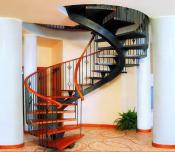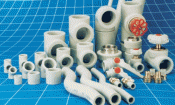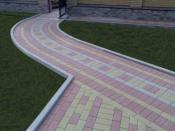Search
Login
Do-it-yourself pond in a summer cottage
The presence of your own spectacularly decorated pond in a personal plot is a unique opportunity not only to diversify the ordinary design of a summer cottage, but also to bring a touch of harmony into the surrounding space. Having resorted to the favorite technique of landscape designers, you can not only create a personalized territory in an original way, but also create an atmosphere of peace, which is worth its weight in gold in the world of hustle and bustle. That is why there is no such owner of a summer cottage who has never been visited by the thought of creating a reservoir. How to make a pond on the site with your own hands? Welcome for detailed recommendations!
Content
- Creating a pond in a summer cottage. Key recommendations
- Pond construction ideas. What to choose?
- Construction of a pond by hand. Sequencing video
- Pond Decorating Tips
Creating a pond in a summer cottage. Key recommendations
It is no secret that the key to a well-kept pond is an optimal, correctly selected location. And this is the first thing to think about when planning the design of a summer cottage with a pond. The root cause of this is the biological consistency of the pond, as a result of which, when choosing the location for the pond, a number of rules must be observed so as not to violate the integrity of its relationships. Thus, the main recommendations for choosing a location can be considered:

1. Creation of a pond in an open area, in the territory of which there are no large trees, which are a potential source of pollution of a reservoir;
2.In order to avoid drying out of the pond, the development of bacteria and premature flowering, it is desirable to place the pond on the shady side;
3. When constructing a pond, it is necessary to take into account its potential expansion in advance.

Pond construction ideas. What to choose?
Reflecting on the project of your own pond, it is recommended that you familiarize yourself with the common ideas of the pond at the summer cottage and choose the one that seems most optimal for you. Before constructing a foundation pit for a future reservoir, it is important to determine the material that will act as the basis for your pond in a summer cottage. And there are not many options. If you want to go along the most simplified path, then you have a wonderful opportunity to facilitate the manufacture of a pond in a summer cottage.

To do this, it is enough to choose a ready-made polyvinyl chloride form as the basis for the reservoir, which during the device is simply placed inside the pit.

Construction of a pond by hand. Sequencing
If you want to feel like a real designer and build a pond with the most natural shape, then you need to use the second option, which involves installing the pond at the summer cottage manually, using an insulating film. In general, the process of creating a pond on a site with your own hands can be represented as follows:
1. Firstly, it is necessary to determine the location of the reservoir and the desired shape, which is recommended to be identified directly on the territory. Using a cord or watering hose will facilitate this stage of work;

2. Based on the designated boundaries, you need to dig a hole of the required shape. It should be borne in mind that the depth of the pond should be more than 80 cm, taking into account a 10-cm layer of sand, which can also be done without. The bottom of the pond should be free of various roots and stones. Earthwork involves not only the creation of a pit, but also the modeling of the coastline, since if the pond is designed for swimming, then this stage of work must be carried out efficiently. At the end of excavation, it is necessary to check the location of the shores; they should be at the same level;

3. It is recommended to dig a ditch along the perimeter of the pond, the depth of which should not be less than 15 cm. It is necessary in order to effectively strengthen the fibers and the film itself;
4. Before reinforcing the film, as mentioned above, the bottom of the pit is covered with a 10-cm layer of sand, which prevents tearing of the insulating film and facilitates the shrinkage of all materials used. Further, the pit is lined with an insulating film, the edges of which should protrude outside the pit. To qualitatively fulfill this condition, the size of the film to be purchased should be calculated by the formula: pond length plus two depths plus 60 cm of allowances on the shore. The width of the film is calculated by the same formula.

5. Before you put the film, you need to take into account its peculiar feature, according to which the oilcloth is supplied in rolls, and before you start laying, the strips located in the roll must be connected with a heating device. The film is laid out in accordance with the configuration features of the pond. The finished sheet is laid freely, and the edges are fixed around the perimeter with bricks, decorative stones or gravel. At the end of the above work, the pond is filled with water. No need to rush with trimming the edge of the film; wait for the moment when it takes the desired shape.

When trimming the film, it is necessary to provide for the presence of an additional 25 cm under the blind area.
Pond Decorating Tips
The final stage of construction is the arrangement and decoration of your pond. Landscaping is extremely important at this stage, since the choice of plants in this case is extremely diverse. There are several plant species for the pond, characterized by their group affiliation:
- deep-sea plants that need to be planted at a considerable depth of the reservoir, reaching 1.5 meters. These include a water lily, nymphaeum, and brazii;

- oxygenating plants that absorb carbon dioxide and produce oxygen, which prevents premature pollution of the reservoir. The main representatives are hornwort and elodea;
- Plants, whose vital activity is carried out on the surface, are designed to maintain ecological balance in the reservoir and prevent overheating of the source. Azolla, teloresis, duckweed, water hyacinth are the main representatives of this group;

- plants of the coastal zone should quietly tolerate constant stagnant waterlogging. These qualities are possessed by the swamp, sat, and many other representatives of the plant world. Plants near the pond have an important functional purpose, the essence of which is to combine the pond and the rest of the cottage area into a single whole. Another important function of coastal vegetation is to protect the shores of the reservoir from erosion, and that is why the vegetation must have a powerful root system. When choosing plants, it is recommended to pay attention to the features of their vegetative period and acquire plants with different flowering periods, planting them at different levels of the reservoir.

To give the pond a special sophistication, you can resort to various design techniques, which consist in creating the vividness of the pond. To do this, you can install fountains for the pond to enjoy the overflow of water streams, sitting on decorative benches installed near the reservoir. It is important to take care of the arrangement of decorative figures on the shore of the reservoir.


The owners of garden ponds still enjoy the most popular snails, frogs and herons, and you can add an exotic touch by placing a decorative crocodile on the shore of the pond.

If you plan to populate your pond with fish, then you can do this only 4-6 weeks after planting, as they should be fixed. Also, before populating the pond with fish, you need to install an external filter, and you need to do this as soon as possible by adding a sterilizer and pump to this design, which ensures high-quality water purification from algae and pollution.






